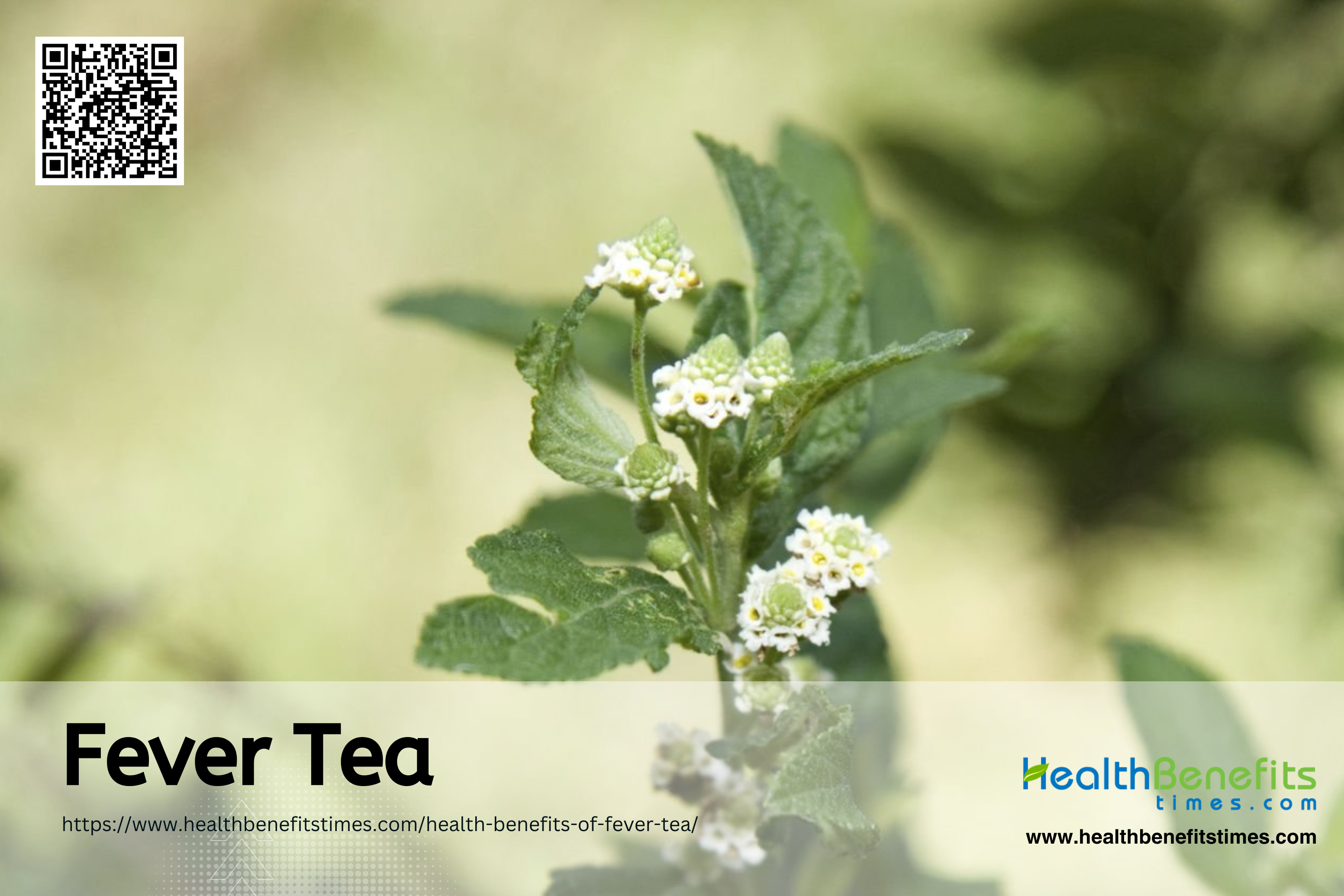 What is Fever Tea?
What is Fever Tea?
Fever Tea, scientifically known as Lippia javanica, is a medicinal plant native to southern and tropical Africa, belonging to the Verbenaceae family. This woody shrub, which can grow up to 1-2 meters in height, is characterized by its square stems, hairy leaves with noticeable veins, and small cream flowers arranged in dense, rounded clusters. Traditionally used in various African cultures, the leaves and twigs of Fever Tea are made into infusions to treat a wide range of ailments including coughs, colds, fever, asthma, bronchitis, pneumonia, and skin disorders. Additionally, it is used for its antimalarial properties and as a general health tonic. The plant is also noted for its aromatic qualities, with a lemon-verbena scent emitted when the leaves are crushed, making it a popular choice for herbal teas and even as a natural insect repellent.
Physical description (plant, leaves, flowers)
It is well-known for its medicinal properties. This shrub grows upright with multiple woody stems, reaching heights of 1 to 2 meters. It is identified by its square stems and rough, hairy leaves that have visible veins. When these leaves are crushed, they release a strong lemon-like scent. The plant features small, cream-colored flowers that are clustered tightly in round heads, adding to its pleasant appearance and fragrance. Although its fruits are small, inconspicuous, and dry, they are essential for the plant’s reproductive cycle. Fever Tea is valued for its combination of beauty and usefulness, making it a prized addition to both medicinal and decorative gardens.
Origin and traditional uses
This plant is highly valued for its healing properties and plays a vital role in traditional African medicine, being used by various communities throughout the continent. Its leaves, stems, and sometimes roots are brewed to make an herbal tea or infusion that is traditionally used to address a variety of health issues like coughs, colds, fever, malaria, bronchitis, and asthma.
Growing conditions and cultivation
This woody shrub stands tall at 1 to 2 meters and prefers sunny spots but can also handle some shade. It’s not picky about soil and thrives in well-drained soil, especially loamy types. While it can withstand drought, regular watering is best for optimal growth. You can grow Fever Tea from seeds or cuttings, planting seeds in trays in early spring or directly in beds in early summer. It needs a warm and bright spot for germination. The best temperature for seed growth is between 15°C and 25°C, showing its preference for warmer weather. Fever Tea is easy to grow, has medicinal benefits, and smells great, making it a valuable plant for both health and beauty in your garden.
Nutritional Value of Fever Tea (Lippia Javanica)
Lippia javanica is a plant with a rich history of medicinal use, particularly in southern African countries where it is traditionally used to treat respiratory ailments such as asthma. The nutritional value of Fever Tea is highlighted by its rich phenolic content, which contributes to its anti-inflammatory and antioxidant properties. Studies have shown that L. javanica can significantly reduce allergic airway inflammation by inhibiting Th2-mediated immune responses and oxidative stress. Additionally, the inclusion of L. javanica in broiler diets has been associated with improved growth performance and favorable fatty acid profiles in the meat, suggesting that it may also have nutritional benefits when used as a feed additive. The presence of phenylethanoid glycosides, such as verbascoside and isoverbascoside, further supports the plant’s therapeutic potential and its role in traditional medicine. Overall, the nutritional value of Fever Tea is underpinned by its bioactive compounds, which have demonstrated health-promoting effects in both human and animal studies.
Health benefits of Fever Tea (Lippia Javanica)
Fever Tea is well-known for its healing properties and health advantages. It’s commonly used in natural remedies and has been studied by scientists to confirm its traditional medicinal uses and importance in medicine.
1. Microbial resistance
These oils, taken from the plant’s leaves, flowers, and stems, have been found to stop the growth of different types of bacteria like Escherichia coli and Staphylococcus aureus when diluted by 1%. Variations in where the plant grows affect the types of essential oils it produces, with unique ones like myrcenone, carvone, and linalool influencing how well it fights germs. Not only that, but these oils have been proven to combat bacteria such as Bacillus cereus and Klebsiella pneumoniae, with the latter being particularly vulnerable. These discoveries back up the traditional use of Lippia javanica for respiratory and skin problems, and suggest it could help with drug-resistant germs.
2. Oxidative stress reduction
Recent studies support its effectiveness as an anti-inflammatory and antioxidant. One research showed that a 5% L. javanica tea infusion reduced white blood cell count in bronchoalveolar lavage fluid of rats sensitized to ovalbumin, hinting at a suppressed immune response. This was backed by lower levels of serum IgE and inflammatory cytokines. Moreover, L. javanica treatment lowered oxidative stress markers while boosting antioxidant defenses. Another study on liver protection found that L. javanica herbal tea increased antioxidant activity and reduced oxidative damage in liver cells. These results back the traditional use of L. javanica for respiratory issues and hint at its wider antioxidant benefits.
3. Treats colds, cough and fever

Lemon bush, also known as Lippia javanica, is a traditional remedy in southern African countries for respiratory issues like colds, coughs, and asthma. Studies indicate that a tea infusion of L. javanica may help ease allergic airway inflammation due to its high phenolic content. This anti-inflammatory impact is backed by a decrease in white blood cell levels, including eosinophils, lymphocytes, and neutrophils, along with lower serum IgE and inflammatory cytokines such as IL-4, IL-5, IL-13, and TNF-α. Moreover, L. javanica showcases antioxidant qualities by lowering oxidative stress markers like malondialdehyde and nitric oxide while boosting antioxidants like superoxide dismutase and glutathione in an asthma rat model. Furthermore, the plant’s essential oils have shown antimicrobial properties, with varying effectiveness against bacteria like Klebsiella pneumoniae, supporting its traditional use in treating respiratory infections.
4. Support anti-inflammatory process
Recent scientific studies have confirmed its anti-inflammatory properties. One research showed that a tea made from L. javanica notably decreased white blood cell levels, including eosinophils, lymphocytes, and neutrophils, in bronchoalveolar lavage fluid, indicating reduced inflammation. This was linked to suppressing Th2-mediated immune responses, as seen in lower levels of serum IgE and inflammatory cytokines like IL-4, IL-5, IL-13, and TNF-α. Moreover, using L. javanica resulted in lower oxidative stress markers such as malondialdehyde and nitric oxide, while boosting antioxidant enzymes, further enhancing its anti-inflammatory effects. Another study highlighted how L. javanica extracts combat inflammation by preventing protein denaturation and stabilizing cell membranes, which explains its traditional use for fever and inflammation. These discoveries support the traditional role of Lippia javanica as an anti-inflammatory remedy, offering a scientific foundation for its effectiveness in addressing inflammatory conditions.
5. Aids in controlling asthma symptoms
Recent studies have backed up these traditional uses. One research showed that a 5% tea infusion of L. javanica had anti-inflammatory and antioxidant properties, and could help with asthma symptoms in rats sensitive to ovalbumin. The tea reduced certain white blood cells in the lungs, like eosinophils, lymphocytes, and neutrophils. It also lowered immune responses linked to asthma, as seen in decreased IgE levels and inflammatory cytokines. Moreover, the tea helped reduce oxidative stress and boost antioxidant abilities. When the lungs were checked closely, there was a clear decrease in inflammation. In summary, these results confirm the traditional practice of using L. javanica for breathing problems and hint at its potential in managing asthma symptoms.
6. Supports liver protection
A recent study focused on the liver-protective effects of Lippia javanica herbal tea by inducing hepatic oxidative injury in Chang liver cells. The study results showed that prior treatment with L. javanica infusion notably increased levels of reduced glutathione and non-protein thiol, as well as the activities of superoxide dismutase (SOD) and catalase. This led to a decrease in hepatic malondialdehyde levels, indicating a reduction in lipid peroxidation, a sign of oxidative stress decrease. The infusion also influenced the activities of enzymes like acetylcholinesterase, glucose-6-phosphatase, fructose-1,6-bisphosphatase, glycogen phosphorylase, and lipase, which reflect disrupted metabolic functions in liver cells. The presence of phytoconstituents such as phenolic compounds, tannins, phenolic glycosides, and terpenoids, combined with the strong binding of dihydroroseoside and obacunone with SOD and catalase, as seen in molecular docking, further confirms the liver protection potential of L. javanica. These findings support the traditional use of Lippia javanica herbal tea as a remedy for liver diseases related to oxidative stress and emphasize its role in liver health.
7. Enhanced gastrointestinal health
Recent studies have started to uncover the science behind these traditional uses, showing that Lippia javanica has anti-inflammatory, antioxidant, and antimicrobial properties. For example, one study found that a tea made from Lippia javanica could reduce allergic airway inflammation by blocking Th2 cell activation and lowering oxidative stress, supporting its potential for respiratory conditions. The plant’s essential oils have also demonstrated antimicrobial effects against various pathogens that impact the respiratory system. While research has mainly focused on respiratory health, the presence of phenolic compounds and its overall antioxidant capacity hint at possible benefits for gut health too, as oxidative stress and inflammation often play a role in gastrointestinal disorders. Additionally, the liver-protective effects of Lippia javanica, shown by its ability to balance redox levels and metabolic functions in liver cells, further back its role in supporting gut health. However, it’s essential to note that although Lippia javanica shows promise, using it at high doses requires caution due to findings on its acute oral toxicity.
8. Chest pains

People often make a tea from its leaves, which has been studied for its anti-inflammatory, antioxidant, and antimicrobial properties. Research has found that L. javanica has phenolic compounds that can ease allergic airway inflammation, showing a drop in white blood cell count, inflammatory cytokines, and oxidative stress markers in a rat asthma model. Plus, the essential oils from L. javanica leaves are strong against microbes, with their effectiveness varying depending on the region’s chemical makeup, especially against bugs like Klebsiella pneumoniae. These discoveries support the traditional use of L. javanica in treating respiratory issues, particularly those with chest pains.
How to Prepare Fever Tea
Make fever tea using Lippia javanica, also known as fever tea or lemon bush, by boiling 2 cups of water. Measure out 1-2 teaspoons of dried Lippia javanica leaves while the water heats up. Once the water boils, pour it over the leaves in a pot or tea strainer. Let the tea steep for 10-15 minutes, making sure the leaves are fully submerged to get all their medicinal properties. After steeping, strain the leaves from the tea using a fine mesh sieve or tea strainer. Enjoy the tea hot, and if you like, add honey for sweetness. This herbal tea is commonly used to help with fevers, colds, and respiratory issues because of its sweat-inducing and antimicrobial properties.
Potential side effects and precautions
However, recent studies have raised concerns about its safety profile when consumed in high doses. Research has shown that while aqueous leaf extracts of L. javanica can be effective in controlling cattle ticks, they may pose health risks if ingested in large quantities. In one study, mice that were administered high doses of the extract exhibited lethargy and a significant mortality rate was observed. Another study indicated that both oral and intraperitoneal administration of the extract at various dosages led to changes in body and organ weights, hematological indices, and biochemical parameters in mice. These findings suggest that while L. javanica may have therapeutic applications, caution should be exercised regarding the dosage, and further research is needed to fully understand its potential side effects and precautions for human use.


